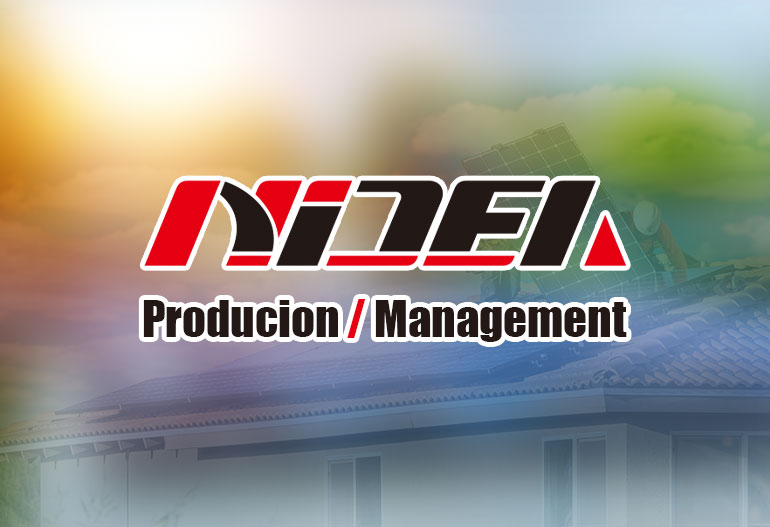
Analysis of Overreach Tripping Faults in DC Operating Power Supply Systems
1. Introduction
2. Overview of DC Operating Power Supply Systems
2.1 Core Components
Charging Devices: Rectifiers or switch-mode power supplies that convert AC input (e.g., 380V AC) to DC, maintaining the system voltage and charging the battery bank. Modern systems use high-frequency switching rectifiers with features like voltage regulation (±1%), current limiting, and parallel operation for redundancy.
Battery Banks: Typically lead-acid (VRLA) or lithium-ion batteries, providing backup power during AC input failures. Their capacity (Ah) is sized to support critical loads for 1–8 hours, depending on system requirements.
DC Distribution Network: A network of cables, busbars, and junction boxes that distributes DC power to loads, divided into multiple feeder circuits (e.g., breaker control, relay protection, signal systems).
Protective Devices: Fuses, miniature circuit breakers (MCBs), or DC circuit breakers (DCCBs) installed in each feeder and the main bus to isolate faults (e.g., short circuits, overcurrents). These devices are the frontline defense against faults and are central to overreach tripping issues.
Monitoring and Control Systems: Devices (e.g., insulation monitors, voltage meters, alarm systems) that track system parameters (voltage, current, insulation resistance) and alert operators to anomalies.
2.2 Operational Characteristics
Unidirectional Current: DC current flows in one direction, eliminating zero-crossings, which affects arc extinction in protective devices (e.g., DCCBs require special arc-quenching mechanisms).
Low Voltage, High Reliability: Operating at 110V/220V DC, these systems prioritize stability over high power, as even small voltage dips can disable protective relays.
Insulation Sensitivity: DC systems are highly vulnerable to ground faults (single or double), which can cause abnormal currents, voltage shifts, and protective device misoperation.
3. Mechanism of Overreach Tripping in DC Systems
3.1 Protective Device Coordination Principles
Current Rating (Iₙ): The maximum continuous current the device can carry without tripping.
Tripping Time (t): The time delay before the device trips when overcurrent occurs, typically inverse-time (faster tripping for higher currents) or definite-time (fixed delay regardless of current magnitude).
Downstream devices should have a lower current rating than upstream devices (Iₙ_downstream < Iₙ_upstream).
Downstream devices should trip faster than upstream devices for the same fault current (t_downstream < t_upstream).
3.2 Fault Scenarios Leading to Overreach
Downstream Device Failure to Trip: The downstream protective device (e.g., feeder fuse) fails to operate during a fault, forcing the upstream device to trip as a backup.
Upstream Device Premature Tripping: The upstream device trips before the downstream device, even though the downstream device is functional.
Simultaneous Tripping: Both devices trip, but the upstream trip occurs first, causing a larger outage.
4. Root Causes of Overreach Tripping
4.1 Inadequate Protective Device Coordination
Incorrect Rating Selection: Using downstream devices with a current rating equal to or higher than upstream devices (e.g., a feeder MCB rated 10A with a main DCCB also rated 10A). During a 15A fault, both devices sense the same current, and the upstream device—often with faster mechanical response—may trip first.
Mismatched Tripping Curves: Using inverse-time downstream devices with definite-time upstream devices (or vice versa) can disrupt time coordination. For example, a downstream inverse-time MCB may have a 0.5s delay at 5×Iₙ, while an upstream definite-time DCCB has a 0.3s delay at the same current, causing the upstream device to trip first.
Ignoring DC Arc Characteristics: DC arcs do not extinguish at zero-crossings, so fault currents may persist longer than expected. If upstream devices are not designed to account for this, they may trip prematurely before the downstream device can clear the arc.
4.2 Device Defects or Degradation
Fuse Aging: Over time, fuse elements (especially in DC systems) can corrode or develop increased resistance due to temperature cycling. This delays or prevents tripping, forcing the upstream device to act.
MCB/DCCB Mechanical Wear: Contacts in MCBs or DCCBs may oxidize or become pitted due to repeated operation, increasing resistance and slowing tripping time. Solenoids or springs in the tripping mechanism can also weaken, reducing response speed.
False Tripping Sensitivity: Some DC protective devices are overly sensitive to transient currents (e.g., inrush currents from capacitor banks or motor starting). A transient from a downstream fault may trigger the upstream device before the downstream device processes the fault.
4.3 Ground Faults and Insulation Deterioration
Single Ground Faults: A fault between a positive conductor and ground (or negative and ground) does not immediately cause overcurrent but shifts the system’s floating potential. This can induce stray currents in adjacent circuits, causing upstream devices to sense "false" overcurrents.
Double Ground Faults: Two simultaneous ground faults (e.g., positive to ground and negative to ground) create a low-resistance path, resulting in a high short-circuit current. If the fault current splits between multiple feeders, upstream devices may detect a larger current than downstream devices, triggering overreach.
Insulation Degradation: Moisture, dust, or chemical contamination reduces insulation resistance in cables or junction boxes. This increases leakage currents, which can accumulate and trigger upstream overcurrent protection.
4.4 Wiring and Connection Issues
Incorrect Cable Routing: Parallel routing of feeder cables with high-current AC cables induces electromagnetic interference (EMI) in DC circuits. EMI can generate noise in current sensors, causing upstream devices to misinterpret noise as overcurrent.
Loose or Corroded Connections: High resistance at terminals (due to corrosion or poor torque) creates voltage drops and localized heating. During a fault, this can reduce the current reaching downstream devices, delaying their trip, while upstream devices see the full fault current and trip first.
Shared Neutral/Common Lines: In some systems, multiple feeders share a common neutral line. A fault in one feeder can cause excessive current in the shared neutral, triggering upstream protection even if the feeder’s own device is functional.
4.5 Operational and Maintenance Errors
Improper System Expansion: Adding new loads (e.g., additional relays) to an existing feeder without upgrading the feeder’s protective device. This increases the feeder’s fault current potential, exceeding the downstream device’s capacity and forcing upstream tripping.
Incorrect Calibration: During maintenance, technicians may misadjust tripping time delays (e.g., setting a downstream MCB’s delay to 0.6s instead of 0.3s) or use the wrong current rating for replacement devices.
Lack of Periodic Testing: Protective devices require regular testing (e.g., with DC current injectors) to verify tripping curves. Without testing, degraded devices go undetected until a fault occurs, leading to overreach.
5. Diagnostic Methods for Overreach Tripping
5.1 Post-Fault Data Collection
Alarm and Event Logs: Extract data from the system’s monitoring unit, including timestamps of tripping events, fault current magnitudes, and voltage fluctuations. This helps determine which device tripped first.
Device Inspection: Examine tripped devices for signs of damage (e.g., melted fuses, pitted contacts) to assess whether they operated correctly or failed.
Circuit Tracing: Use a multimeter or insulation tester to check for ground faults, loose connections, or abnormal resistance in the faulted circuit and adjacent feeders.
5.2 Simulation and Coordination Analysis
Tripping Curve Overlay: Plot the tripping curves of upstream and downstream devices using software (e.g., ETAP, SKM PowerTools) to check for overlaps. Overlapping curves indicate coordination issues.
Fault Current Calculation: Use Ohm’s Law (I = V/R) to calculate expected fault currents in the downstream circuit. Compare with the rated breaking capacity of protective devices to ensure they can handle the current.
EMI Simulation: Use tools like SPICE to model EMI effects from adjacent AC circuits, verifying if noise could cause false tripping.
5.3 On-Site Testing
Primary Injection Testing: Inject controlled DC currents into the downstream circuit to simulate faults, measuring the tripping time of both downstream and upstream devices. A properly coordinated system should show the downstream device tripping first.
Insulation Resistance Testing: Use a megohmmeter to measure insulation resistance between conductors and ground. Values <1MΩ indicate insulation degradation, a potential source of abnormal currents.
Contact Resistance Testing: Measure resistance at connections using a micro-ohmmeter. Values >100µΩ suggest loose or corroded contacts, which can distort current distribution.
6. Case Study: Overreach Tripping in a 220kV Substation
6.1 Fault Background
System Configuration: The DC system operated at 220V, with a main bus protected by a 50A DCCB (definite-time, 0.5s delay). Feeder 3, supplying 110kV breaker controls, was protected by a 10A MCB (inverse-time, ~0.3s at 50A).
Event Description: During heavy rain, a ground fault occurred in Feeder 3’s cable (water ingress caused positive-to-ground short). Instead of the 10A MCB tripping, the main 50A DCCB tripped, cutting power to all feeders.
6.2 Diagnosis
Data Logs: The monitoring system recorded a 45A fault current, with the main DCCB tripping at 0.4s and the Feeder 3 MCB failing to trip.
Device Inspection: The Feeder 3 MCB’s contacts showed severe corrosion, with a measured contact resistance of 500µΩ (normal: <50µΩ).
Simulation: Overlaying tripping curves revealed the MCB should have tripped in 0.2s at 45A, but corrosion delayed its response. The main DCCB, with a 0.5s delay, tripped early due to a design flaw: its current sensor was overly sensitive to DC arcs, reducing its effective delay to 0.4s.
6.3 Resolution
Replaced the corroded MCB with a new 10A inverse-time device and cleaned all connections.
Retrofitted the main DCCB with a DC arc-resistant sensor to restore its 0.5s delay.
Added insulation monitors with ground fault location 功能 to detect water ingress early.
7. Preventive Measures to Mitigate Overreach Tripping
7.1 Optimize Protective Device Coordination
Design with DC Characteristics in Mind: Select devices rated for DC applications (not AC-rated devices, which may have unsuitable tripping curves). Use inverse-time curves for downstream devices and definite-time for upstream devices to ensure time coordination.
Perform Detailed Coordination Studies: Use software to simulate fault currents and overlay tripping curves, ensuring downstream devices trip 0.3–0.5s faster than upstream devices for all possible fault currents.
Over-size Upstream Devices: Ensure upstream devices have a current rating 1.5–2× higher than the sum of downstream devices to avoid shared fault current triggering premature trips.
7.2 Select and Maintain Quality Components
Use DC-Specific Protective Devices: Choose DCCBs and MCBs designed for DC arc quenching (e.g., with magnetic blowout coils) and rated for the system’s voltage and fault current.
Implement Regular Testing: Test protective devices annually using primary injection to verify tripping times and curves. Replace devices with >10% deviation from specifications.
Monitor Insulation and Connections: Use online insulation monitors to track resistance levels and thermal imaging to detect loose connections. Clean and torque connections quarterly.
7.3 Improve System Design and Wiring
Separate AC and DC Cables: Route DC feeder cables away from high-current AC cables (minimum 300mm separation) to reduce EMI. Use shielded DC cables grounded at both ends.
Avoid Shared Neutrals: Design each feeder with dedicated positive, negative, and ground conductors to prevent current sharing during faults.
Add Redundancy: For critical feeders, install dual protective devices (e.g., a fuse in series with an MCB) to reduce failure risk.
7.4 Enhance Operational Practices
Document System Changes: Maintain updated diagrams of the DC system, including protective device ratings and tripping settings, especially after expansions or retrofits.
Train Maintenance Staff: Ensure technicians understand DC system specifics (e.g., ground fault risks, arc characteristics) and proper calibration procedures.
Implement Condition Monitoring: Use IoT sensors to track device temperatures, current flows, and tripping history, enabling predictive maintenance before failures occur.
